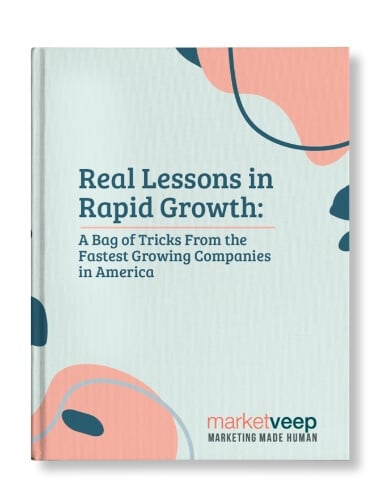Understanding and Measuring Your Content Marketing ROI

 When you purchase through links on our site, we may earn an affiliate commission.
When you purchase through links on our site, we may earn an affiliate commission.
By Jennelle McGrath
Measuring your content marketing ROI is one of the most effective ways to understand how, and if, your company’s content creation is living up to the time and resources you’ve invested in it. With the information in this blog post, you’ll be better equipped to decipher what ROI is, why it’s an important indicator of your content’s successes and failures, and how you can best utilize it to make the best decisions for your brand’s continued growth.
Finding an exact measurement of your company’s return-on-investment (ROI) can seem like a daunting task. ROI on its own is an easy enough concept to wrap your head around, as it’s exactly what it sounds like: a measurement that shows the return, or profit, you’ve earned from the original investment you made in your marketing efforts.
Calculating the specific ROI of the content you produce, however, is significantly more complicated. So much so, that a recent study conducted by the Content Marketing Institute found that 47% of all B2B marketers, and 34% of B2C marketers, ignore their content marketing ROI altogether.
As complicated as calculating an ROI can seem, disregarding it in your marketing strategies can prove disastrous. Without the information your ROI provides, your content marketing strategies can become ill-defined and amorphous, lacking the direction and unbiased feedback you need to accurately pinpoint successes and find the kinds of content that are worth investing in, and the kinds that are not.
The simple steps below will help you outline the basics of content marketing ROI, walk you through the process of measuring your ROI, and reinforce how important those measurements can be to your brand’s successful growth.



What Makes Up Your Content Marketing ROI?
Let’s get started by outlining some of the basic factors that go into creating what will eventually become your ROI measurement.
Most ROIs involve calculating your website’s Key Performance Indicators (KPIs), which are measurable values that illustrate the ways your company has, or has not, achieved your internal business objectives. Some common KPIs include:
-
Website traffic
-
Total leads generated
-
Conversion rates
-
Sales metrics
While leads and conversion rates are important for marketers to track, and website traffic is a good baseline to make performance expectations off of, it’s ultimately your overall sales and revenue metrics that are the most important factors to consider when working with ROI.
What you want to be looking for is a direct link between the amount of money invested in your marketing efforts and the amount of money earned as a result of those investments. For example, if your company sells lawn mowers and you share a free eBook on lawn mower maintenance that results in a spike in leads, you can track those leads to see how many turned into paying customers. If the amount earned from the paying customer surpasses the amount you paid to produce the eBook, then you have a positive content marketing ROI and proof that your audience is finding your content valuable.
Determining Your Investment and Profit
This brings us to the inception of all of your ROI results: the initial investment. Before producing content, you need to know what kind of investment you can devote to the content creation process. Understanding your initial investment means tracking how much time - and money - is spent in the process that leads to a finished, marketable product.
To determine your level of investment in a given piece of content, you’ll want to utilize some of the steps HubSpot outlines in one of their blog posts:
-
Use a time tracking tool to learn exactly what your investment looks like
-
Decide what specific metrics/investments you want to track
-
Translate the time you've invested in a product into profit
-
Measure the resulting ROI
That sounds like a lot of stuff to work through, but really, it can be condensed into three key categories: the value of tracking time, tracking metrics, and the translation to profit.
Tracking Time
Tracking the time you spend on a project is an often overlooked tool, but one that’s essential in understanding your eventual ROI. Without time tracking, you’ll never have a clear outline of how long a project takes to complete, making it difficult to decipher how much investment a given project is worth.
HubSpot recommends using Toggl for your time tracking needs, but a simple Google search will bring up plenty of alternatives, such as Clockify, Hubstaff, Timely, TimeCamp, and many, many more. Some of these are free-to-use, while others have fees for premium content tools. With the variety available though, you shouldn’t have trouble finding one that works for you and your company.
Tracking Metrics
Once you have all of your time tracking tools equipped, it’s time to calculate the “return” portion of your “return-on-investment.” This part has the potential to be tricky, so be sure to pinpoint what metric(s) you’re tracking so you know how to best quantify the measured metric’s impact on your content’s success, or lack thereof.
As an example, imagine that you’re tracking the number of purchases made on a sales page that’s linked to a call-to-action (CTA) at the end of a blog post. To do this, you’ll want to use your website’s analytics to track the click-through rate (CTR) of the CTA to the sales page. From there, you can see how many people made a purchase from the sales page, providing you with a clear definition of the profit made from the inclusion of that CTA in your blog post.
Translating to Profit
Once you know how much time you’ve invested in a project and compiled some meaningful metrics on it, you can begin calculating the actual profit that the content created for you. This is where things can get tricky, because calculating profit involves the tracking of multiple factors, such as:
-
New visitors to your site
-
New leads
-
New marketing qualified leads (MQLs)
-
New sales qualified leads (SQLs)
-
New customers
Ultimately, the most important statistic to pay attention to is the number of new customers who have made a purchase with you. Once you know how many new customers you’ve earned, you’ll want to multiply that number by the average price of the product those customers purchased. This will give you an accurate representation of your profit, which you’ll then use to define the ROI for your content.
Calculating the ROI
At this point, you’ve tracked and cataloged a lot of information, and now it’s finally time to put it all to good use. There are a number of tools you can use to calculate your content marketing ROI, but in the end, it all comes down to a common foundational formula, which you can see below:
(Return – Investment)
Investment
This means that defining your content marketing ROI involves subtracting the original investment from the total return, and then dividing that result by the original investment. Your final ROI will be a positive or negative percentage, with a negative percentage - like -25% - showing how much profit you have lost, while a positive percentage - like +25% - will show you what percentage of your investment you’ve made back in profit.
With the right information, proper order-of-operations, and a basic grasping of math, you can find the ROI for the content you’ve created without an exhaustible amount of effort, and the benefits of doing so will far outweigh any potential inconveniences you might encounter.
Evaluating Your Content Marketing ROI
When you have an ROI percentage for your content marketing efforts, regardless of its positive or negative value, you empower yourself with the ability to grow and evolve your brand towards betterment and success. Your ROI doesn’t even have to be perfectly exact either; even a close approximation can give you the knowledge you need to decide what should come next.
If you have a positive ROI, then you know that whatever you’re doing is working, which allows you to devote even more of your time to your current content creation strategy. If your content is underperforming, however, then that can still empower you, because now you know that your content marketing strategies aren’t working and it’s time to start exploring other options.
Ultimately, measuring and understanding your content marketing ROI is a tool used for your own benefit. It can look intimidating, but in the end, it is vital for your marketing efforts as it highlights your successes and pinpoints the areas that need improvement with straightforward, persuasive data.
Get The Latest From
Market Veep
RELATED ARTICLES

Embracing Digital Marketing Strategies in Industrial Markets
After all, traditional marketing that focuses on in-person sales visits and printed marketing...

Event Marketing Examples for Every Funnel Stage
But exactly what is event marketing, and how can you incorporate it into your overall marketing...

Exploring the Latest Manufacturing Marketing Trends
Manufacturing marketing trends are no exception, as many top companies now rely on digital...

Get Growing!
Download our eBook and get advice from 8 CEOs of Inc. 5000 companies in their own words.

GREAT MARKETING PARTNER
Market Veep is a great firm that handles all of our marketing efforts. This is the second time that I have used the firm. I highly recommend Market Veep!

Cres F.

EXCEPTIONAL EXPERIENCE
Market Veep's Onboarding Experts in Inbound Marketing are an absolute game-changer! From the get-go, their approach was top-notch. Market Veep's team has undoubtedly set the bar high for excellence in inbound marketing. Five stars aren't enough to commend their outstanding service!

Matthew W.

BEST PARTNER EVER!
As a growing business, setting up our first-ever HubSpot account was a crucial step towards enhancing our marketing and customer management strategies. From the moment we contacted MarketVeep, their team demonstrated professionalism, expertise, and a genuine desire to help us succeed. Overall, our experience with MarketVeep was exceptional, and we couldn't be happier with the results. Thanks to their guidance, we are now utilizing HubSpot to its fullest potential, streamlining our marketing efforts, and nurturing leads more effectively.

Jean M.

SET UP FOR SUCCESS!
We had an exceptional experience with Market Veep! Their team is professional, super organized, and friendly, and I truly enjoyed working with them. They executed on time and made the process super easy with their organization and documentation. In addition, they provided additional guidance and answered my many questions as I was new to HubSpot, and provided documentation resources for future use. We're now set up to leverage all that HubSpot marketing has to offer, and we couldn't have done it without Market Veep's expertise.

Bailey G.

5 STARS FOR MARKET VEEP!
We had a fantastic experience with Market Veep! Their expert team seamlessly guided us through implementing HubSpot and provided comprehensive training across Sales, Service, and Marketing Hubs. Their knowledge and support significantly enhanced our workflow and overall efficiency. Highly recommend Market Veep for top-notch HubSpot solutions!

Anneke C.







